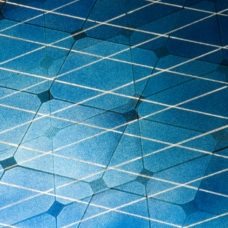Artificial photosynthesis is a promising way to produce clean, inexpensive energy. Scientists are exploring different concepts for the creation of energy-efficient “artificial leaves.”
Renewable energies, mainly solar and wind, are touted by proponents as a healthy way forward with regard to powering the planet.
Opponents of renewables cite their relative low-output to investment ratio and their intermittency. If we were completely dependent on these resources, they are only effective when the sun is shining or the wind is blowing.
Although this argument is well-founded, the intermittency issue can be solved, at least in part, by the development of more efficient storage technologies.
You see, net metering is effective because households with photovoltaic installations actually spend more energy trying to store their captured energy than they would have been able to put into the existing power grid.
Artificial leaves to produce energy from photosynthesis.Click To TweetArtificial photosynthesis is a process that replicates natural photosynthesis to yield energy. Yet, recreating photosynthesis in one efficient and scalable system is a big challenge for researchers.
Natural photosynthesis allows some plants and other living organisms to convert sunlight and carbon dioxide into chemical energy stored in the form of carbohydrates, releasing oxygen as a byproduct. Photosynthesis also enables the separation of hydrogen molecules from the water with the aid of an electric current.
Photosynthesis also enables the separation of hydrogen molecules from water with the aid of an electric current.
Membrane-Based Artificial Leaves, an Artificial Photosynthesis Factory
A team of researchers at Florida Institute of Technology announced that they had designed an artificial photosynthesis system that could generate storable liquid energy while also reducing carbon dioxide levels in the environment.
Florida Tech researchers created a membrane-based architecture that would serve as a tiny factory for artificial photosynthetic systems. This membrane-based system acts as a “battery in reverse,” said researchers: the artificial leaf doesn’t consume stored fuel; instead it generates and releases energy that can be harvested.

This membrane-based system acts as a “battery in reverse,” said researchers.
The artificial leaf doesn’t consume stored fuel. Instead, it generates and releases energy that can be harvested.
However, there’s still plenty of work ahead as researchers need to refine the technology to make it more cost-effective and scalable enough so that solar fuel becomes a reality. A paper on this “artificial leaf” concept was published in the journal Energy & Environmental Science.
Artificial Leaves Mimicking Aquatic Plants
On a similar note, an international team of engineers at the South Korean UNIST (the Ulsan National Institute of Science and Technology) published a study in Nature Communications describing another artificial leaf, artificial photosynthesis system with “groundbreaking efficiency.”
The catch is that UNIST engineers replicated the process of underwater photosynthesis used by marine plants. Full sunlight doesn’t reach deep waters, forcing aquatic plants to adapt and develop various processes of photosynthesis based on wavelengths reaching those depths.
UNIST “hetero-type dual photoelectrodes” comprises two photoanodes of bandgaps that enable extended sunlight harvesting, which means greater efficiency in yielding hydrogen as a fuel, and does not generate carbon dioxide.



















Comments (0)
Most Recent